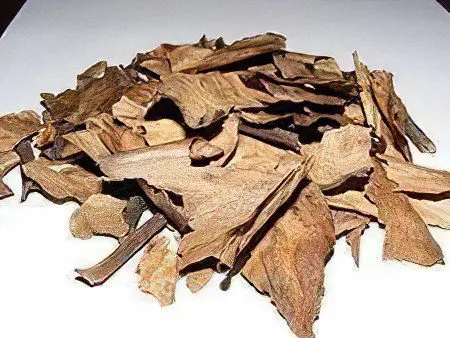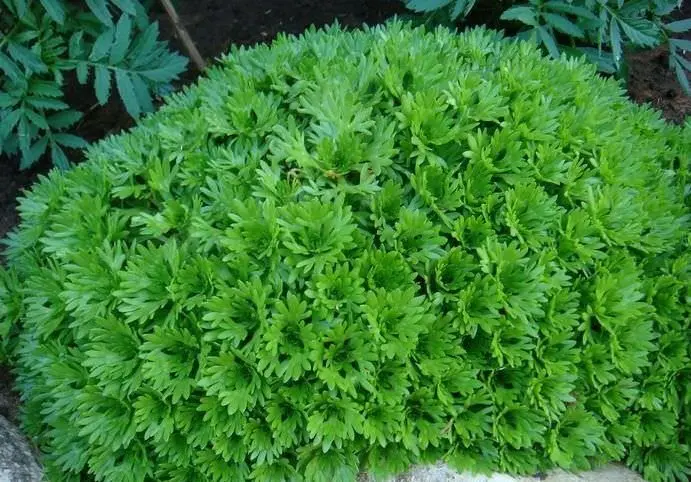Useful properties and use of saxifrage
Botanical characteristics of saxifrage

Saxifrage – This is a perennial plant that belongs to the saxifrage family, has a complex root system, creeping leaves grow from the root, forming a rosette. The surface of the leaves of different types of grass can be leathery and fleshy, rounded and velvety. The characteristic grayish coating of the leaves indicates that the plant is able to release lime. The saxifrage blooms from May to August in white, pink, raspberry or yellow.
The flowers have five petals, collected in paniculate or umbellate inflorescences symmetrical about the center. In September, a fruit is formed – a box with many seeds. The saxifrage chooses rocky cracks, gaps between stones, its powerful root system is capable of destroying the structure of stones. There are about 400 types of saxifrage. In the wild, they can be seen in the mountainous regions of the Northern Hemisphere, the Caucasus and Africa.
Favorite habitats of saxifrage are rocks, mountain slopes, mountain forests. It is also grown in rocky gardens as an ornamental plant, it tolerates harsh winter temperatures well, moist soils and shady areas are suitable for it. Several plant species are listed in the Red Book.
Useful properties of saxifrage
In folk medicine, saxifrage is used as a plant with strong medicinal properties. Known for its anti-inflammatory and antiseptic properties. The plant has anti-febrile and antitumor effects. It is useful to use saxifrage as a powerful antihemorrhoidal and bactericidal agent. The leaves revealed the presence of such useful substances as alkaloids, flavonoids, saponins, coumarins, organic acids, glycosides, triterpene and fatty acids. Also, the plant is rich in vitamins, essential oil, trace elements, pigments.
The use of saxifrage

Medicinal raw materials are saxifrage leaves. After the leaves are torn off, the plant is able to resume the growth of new leaves in a short time. To relieve the pain of otitis media, you need a flagellum from a bandage or cotton wool, moistened with fresh plant juice, gently inserted into the auditory opening and left for a few minutes. With frostbite, suppuration and boils, the juice can be used for lotions. The juice of the plant is a sedative for disorders of the nervous system, for bronchial asthma and ascites.
Decoctions and infusions help with fever, vomiting and infectious diseases. The plant is recommended for inflammatory processes of the liver and bladder, oncological problems. The leaves are applied to areas of the skin affected by ulcers, purulent rashes, carbuncles.
Infusion of saxifrage:
Recipe № 1: 30 g of fresh crushed leaves must be added to 300 ml of boiling water, cooked in a water bath under a lid for 10-15 minutes, then cooled, strained and added warm water to get the initial volume. Use a remedy to relieve any pain, 2 tablespoons 4 times during or after meals.
Recipe № 2: 0,5 cups of crushed leaves should be poured with 500 ml of 40-degree vodka, leave for 14–16 days in a dark place, constantly shaking, then squeeze out the raw materials and drink the tincture 2 times a day before meals, 1 teaspoon, diluted in 10–20 g of water. This medicine is indicated for hypertension.
Recipe № 3: for its preparation, 20 g of saxifrage leaves and 200 ml of water are required to simmer in a water bath for 15 minutes, leave for 45 minutes until cool and strain. It is recommended to use ready-made infusion 2 tablespoons 3-4 times a day after meals. The remedy treats sore throat, gout and bronchitis.
Tincture of saxifrage: the roots of the plant are poured with 40% vodka in a ratio of 1:5, insisted for 10 days and taken 30 drops 4-5 times a day after meals as a diuretic for edema. The rhizomes of the plant, prepared in the form of tinctures and decoctions, are a wonderful remedy against the formation of stones in the kidneys and bladder.
saxifrage flowers
Blooming saxifrage resembles a solid colorful, incredibly luxurious carpet of flowers in May-June. Small flowers, five-petal, regular shape, are collected in paniculate inflorescences, towering on peduncles. Varieties of saxifrage differ in color. Flowers can be white, pink, lilac, yellow, red, bicolor. The plant takes root easily during planting and transplanting. For transplanting, it is better to choose the time after flowering.
Special care for the plant is not required. The saxifrage propagates by self-sowing, by dividing the curtain, separating the rosettes. It takes root quickly, almost within a month you can already get an almost ready-made saxifrage flower. The plant develops well in bright areas, is not afraid of dark places. The soil must be sufficiently moist.
Quarry seeds
Seeds of saxifrage in large quantities are placed and ripen in the fruit-box. At home, seeds are sown in greenhouses in March; in April and May, they can be sown in open ground. The seeds are small, so when planting they are lightly sprinkled without deepening into the soil. After 2-3 weeks, the first shoots appear. Seeds of one of the types of saxifrage – femur – are used in salads, they have a pleasant spicy taste, they are just as valued as cumin and anise seeds.
Indoor saxifrage
Saxifrage is a beautiful plant used for hanging vases and pots. A characteristic feature of the saxifrage is long filamentous shoots up to 60 cm in length, bearing young plants at the ends of the rosette. A herbaceous plant from the genus saxifrage, intended for indoors, may have flat rosettes of basal leaves, with growth a short stem is formed. There is a variegated saxifrage, which is distinguished by leaves decorated along the edges with a white or pink border. The plant loves the shade, so it must be placed in the middle of the room and well watered. The rapid development of saxifrage will allow in just a few months to admire the juiciness of the leaves and beautiful flowers and enjoy the healing properties.
Arends Saxifrages

Arends’ saxifrage is a group of complex interspecific hybrids called mossy saxifrage, or soddy saxifrage. A perennial plant with a powerful root system forms green carpets on the ground surface. It has thin shoots 3–10 cm high, which have short internodes and an apical rosette of small leaves. The flowers are small, numerous, white, pink, cherry, purple. The plant blooms in May and June.
This species looks impressive in any composition, suitable for decorating a garden, attracts gardeners with ease of breeding. Arends’ saxifrage comes in several varieties, the following are very popular:
- Bluetenteppiks – 16 cm high with bright red flowers;
- Purple mantel – with rich pink flowers.
polar saxifrage
The Far North is characterized by permafrost soils, but even in such a harsh climatic zone you can see beautiful plants, such as the polar saxifrage. In the conditions of a short polar summer, the saxifrage manages to please the locals with its incredibly beautiful carpet. The leaves of the saxifrage are fleshy, this will protect them from the effects of cold. The plant chooses relatively warm sandy slopes of the banks of rivers and lakes. Red flowers, towering above the ground, are visible to butterflies and tundra bumblebees.
Wicker saxifrage
Indoor view saxifrage weaving comes from China and Japan. An elegant ornamental plant is distinguished by a rounded shape of shield-shaped leaves, the top of the leaves is green with large stripes along the veins, bright red below. The grass grows in height no more than 30-40 cm, throwing out filamentous shoots, at the ends of which rosettes appear. The saxifrage blooms in summer with a light yellow or pink-white color. He loves moisture, in the spring it is necessary to fertilize the soil.
Traditional medicine recommends that nursing mothers eat one leaf of saxifrage wicker in the morning and evening to increase lactation. After three days of taking the medicinal plant, a positive result will be observed, and along with an increase in the amount of milk, its quality improves. Saxifrage contains tannins, arbutin. The juice from the leaves of the saxifrage weave eliminates the pain of inflammation of the ears, resolves abscesses. reception of herbal decoctions is used for bloody vomiting, fever. The smoke of ignited dry raw materials is fumigated with cones for hemorrhoids.
Marsh saxifrage
Marsh saxifrage as a result of land reclamation is endangered, it is included in the Red Book of the Republic of Bashkortostan. The plant is distributed in the northern regions of the forest and alpine zones of the Northern Hemisphere and in the Arctic. Grass with a short rhizome, creeping shoots, without a rosette. It grows in swamps, in water with a high content of minerals. Nature has endowed saxifrage with many useful properties for the treatment of ailments. Among them are tannins, effective for skin diseases, the plant helps well with heart ailments, indigestion.
Marsh saxifrage infusion: 1 tablespoon of crushed roots or a teaspoon of seeds is poured into 1 glass of water. Boil the composition for 4-5 minutes on low heat, insist 1 hour, filter. This is a good remedy for lotions for dermatitis and acne.
Mossy saxifrage

This perennial plant forms a loose dark green carpet. This species has recumbent, strongly branched shoots with dense foliage. The leaves are rough, oblong in shape. Before flowering, buds appear, they are spherical, large, the same length as the covering leaf. The grass flowers are yellowish-white with red speckles, oblong, obtuse with short nails. A large pistil with two carpels fused at the base is immersed in the receptacle. The fruit of the plant is egg-shaped, the columns protruding, short. Mossy saxifrage – a resident of European mountain systems, lives on rocks and rocky areas of the alpine belt. At home, such a plant can be propagated by cuttings, seeds or dividing the bush. Varieties of mossy saxifrage:
- “Red Admiral” – with bright red flowers;
- “Elf” – a low plant with pink flowers;
- “Sprite” – with raspberry-colored flowers.
Saxifrage soddy
Saxifrage soddy is a perennial plant with a dense basal rosette of dark green leaves and an erect stem. The flowers are collected in paniculate or corymbose inflorescences, they are white, pink and red. The petiolate lower leaves are palmately divided, consisting of five obtuse lobes. The leaves on the stems are tripartite or sessile, entire and smaller. The plant is shaped like a pillow. The grass is frost-resistant, unpretentious in care, prefers good watering in spring and summer. This species is propagated by cuttings, dividing the bush and seeds.
Saxifrage tea
Tea recipe: 1 teaspoon of raw materials (dry roots) must be poured with 1 cup of boiling water, leave for half an hour, add 0,5 cups of rosehip infusion and 1 teaspoon of honey. Take the remedy for stones in the bladder for one to two weeks, 2 times a day.
Contraindications to the use of saxifrage
The correct approach to the treatment of many diseases with the help of saxifrage gives positive results. But it is necessary to take decoctions, tea and infusions of saxifrage with caution during pregnancy, feeding babies, as well as people who have thrombosis or bradycardia. Uncontrolled intake of funds from this medicinal plant can lead to the appearance of dermatitis.









